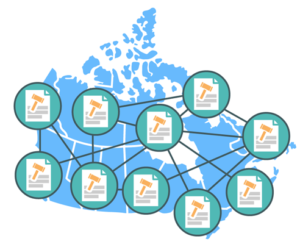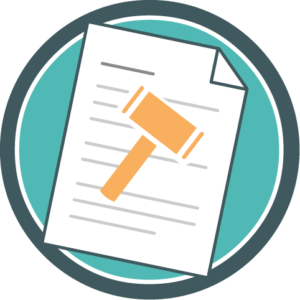New teaching and learning resources support the next generation of leaders in public health policy
August 15, 2017
 The Canadian Partnership Against Cancer has published freely accessible student and faculty resources to support the development, implementation, and evaluation of healthy public policy across Canada. The resources equip research, practice and policy specialists with the information and tools needed to drive sustainable, population-level change in public health.
The Canadian Partnership Against Cancer has published freely accessible student and faculty resources to support the development, implementation, and evaluation of healthy public policy across Canada. The resources equip research, practice and policy specialists with the information and tools needed to drive sustainable, population-level change in public health.
Teaching resources include ready-to-use lecture slides, hands-on assignment sheets, videos to support course instruction, and more. For students, resources include a quick facts document and a video on how to complete assignments and coursework. Student and faculty resources leverage the Prevention Policies Directory – a key instrument used to conduct surveillance, monitoring, and diffusion of healthy public policy in jurisdictions across Canada.[1]
What is the Prevention Policies Directory?
When governments face a public health decision, they often turn to the experiences of other governments to inform their decision-making. Thats where the Prevention Policies Directory comes in.
It is the only comprehensive and fully searchable database of Canadian policy documents and legal instruments, including legislation, regulations, and codes in cancer and chronic disease prevention. The Directory contains thousands of bilingual municipal, provincial, territorial and federal prevention policies categorized by risk factor, policy type, jurisdiction and geographic location.
The Prevention Policies Directory provides a window into the cancer and chronic disease prevention policy landscape, housing a wealth of policies addressing alcohol consumption, the built environment, infectious agents, nutrition, occupational and environmental exposures, physical activity, tobacco use and UV and ionizing radiation. These policy documents, largely inaccessible a decade ago, represent a significant source of knowledge in cancer and chronic disease prevention.
Why does it matter?
The Prevention Policies Directory, coupled with the student and faculty resources, are an important step forward for the public health policy community. Learn how to use the latest knowledge and tools to carry out core functions in public health, including:
 Research
Research
Conduct research on Canadian policy interventions and environmental/policy scans. Search for legal documents on prevention policies such as bills, bylaws, codes regulations and statutes.
Policy diffusion
Support knowledge transfer and exchange. Learn from the successes and failures of other jurisdictions and assess the appropriateness of various policy interventions.
Monitoring and surveillance
View a snapshot of the current policy landscape in Canada, identify new policy approaches and stay up-to-date on the full range of policy options available.
Policy development
Develop public policies to promote health and well-being by learning from other jurisdictions.
What student and faculty resources are available?
The following new student and faculty resources are available online:
Quick fact documents
Printable quick-fact documents to introduce available resources, what they are, and how they can be used by students and faculty in schools of population and public health.
Lecture slides
Lecture slides, complete with speaking notes, background information, and citations to support course instruction.
Hands-on assignments
Ready-to-use assignments that connect academic learning to real-world tools and knowledge. The assignments teach students:
- how to develop a model policy
- how to develop briefing notes
- how to conduct environmental scans
- how to influence a jurisdiction to adopt a healthy public policy
Videos for students and faculty
Resources also include video clips to introduce the Prevention Policies Directory, what it is and how it can be used to advance healthy public policy. Watch the videos below:
Why should faculty and educators use the teaching materials? Many faculty members and educators have a tremendous number of demands on their schedules. Here are some of the reasons the faculty resources are a valuable addition to your teaching toolbox:
Lesson and curriculum planning
Design a syllabus that clearly links assignments and lectures to learning objectives
Get real
Quickly and easily integrate real-world public health policy tools and knowledge into classroom settings
Connect learning with hands-on activities
Create an immersive and contextual learning experience that enables students to translate classroom learning into practice
Enrich your teaching
Deliver effective lectures that combine visual, auditory and hands-on learning to reach a variety of learning styles and to support course instruction both in-person and online
Why should learners use the student resources?
Student resources equip learners with the core competencies needed for a career in public health. Here are some of the reasons to use the learning tools:
- Get ahead! Use the student resources to understand and prepare for assignments and course work
- Gain proficiency in real-world tools: Build competency in finding answers to real-world problems using free, readily available, and open access tools and knowledge
- Acquire practical skills: Develop briefing notes, complete environmental scans and conduct policy analysis and evaluation
- Jump start your career: Understand, explore, and absorb course content through real-world application
Where can I access the student and faculty resources?
Student and faculty resources are openly available and users can edit, modify, copy, distribute and add to the work as needed. Access the materials below:
Notes
[1] Politis, C. E., Halligan, M. H., Keen, D., & Kerner, J. F. (2014). Supporting the diffusion of healthy public policy in Canada: the Prevention Policies Directory. Online Journal of Public Health Informatics, 6(2), e177. http://doi.org/10.5210/ojphi.v6i2.5372
